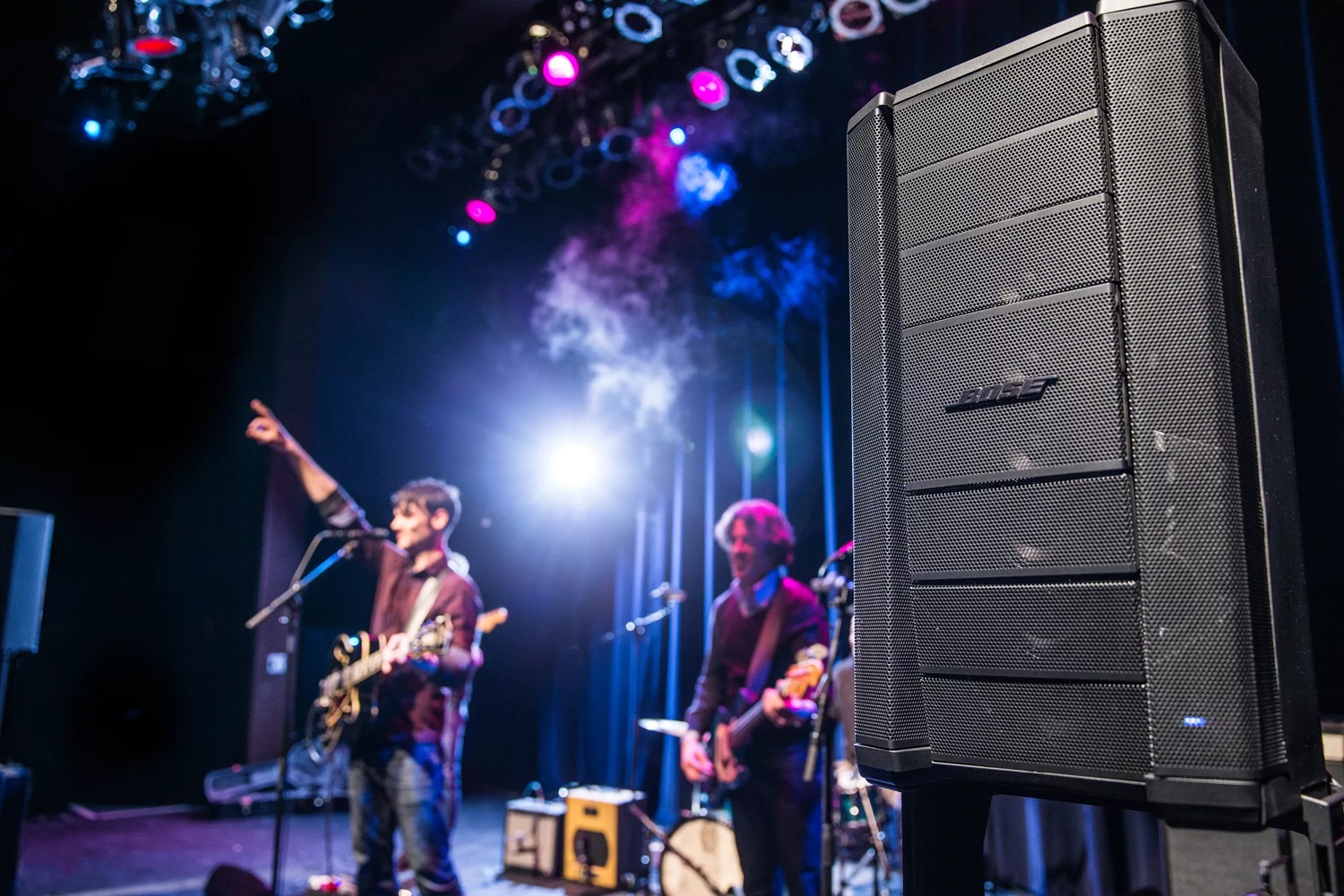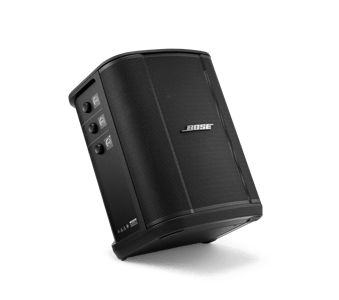Technological advances have made it possible to combine input channels, a mixer, and a powered speaker into a compact, powerful portable unit. This changes the parameters of what is a PA system and what isn't, and it brings the separate components together in a single system to provide a much simpler option for smaller-scale performances like at parties, cafes, or bars.
When choosing a portable PA system, first identify how many input sources you need. For example, if you're an acoustic singer-songwriter who plays guitar and sings, you'll need a portable PA system that can receive and mix two separate signals simultaneously and output them loud enough for your audience to hear.
The Bose S1 Pro+ Portable Bluetooth® Speaker System is a great example. You can plug a guitar and vocal microphone into separate inputs with ToneMatch controls designed specifically to enhance the sound of each instrument. There's also volume, EQ controls, and reverb if you need to dial in some ambience to add depth to your sound. You can also stream music from your Bluetooth-enabled device through the third AUX channel while you take a break between sets.
The rechargeable battery in the Bose S1 Pro+ lasts for up to 11 hours. It also adds optional wireless radiofrequency (RF) transmitters for instrument jacks and vocal microphones, which eliminates the need for any cabling. Plus, it's lightweight and easy to carry, ruggedly constructed, and simple to position in four ways (elevated, tilt-back, monitor mode, or mounted on a speaker stand). With a built-in power amplifier to drive the speaker with enough volume, you'll always be heard loud and clear. All of these innovative features make it perfect for cable-free operation in any location, indoors or outdoors.



